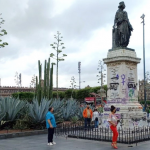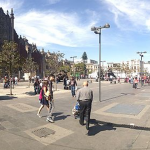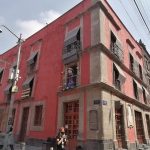
Mexico City’s Hypsographic Monument appears to be a mere allegorical statue on one corner of the Metropolitan Cathedral. It’s the southernmost point of the Plaza del Marqués. In fact, the work is dedicated to Enrico Martínez, the Royal cosmographer, interpreter, publisher and early hydraulic engineer.
Vicente Riva Palacio (1832–1896), the liberal newspaper publisher, began an initiative to erect the monument in 1877. It was complete by 1881 and placed at the other side of the front of the cathedral, near the beginning of today’s Moneda Street. The statue was moved to its present location in 1925, although it was supposed to also indicate Mexico’s “Kilometer Zero,” a standard of measure for all cartographic undertakings at that time.
It’s referred to as the Hypsographic Monument, though, because the pedestal has indicators to show the average level of water on the lakes of Xochimilco, San Cristobal, Xaltocan and Zumpango. The pedestal also has other scientific standards, such as the measure of the meter, the yard, and the rod. It’s a very clear reminder of the 19th-century tendency to combine public art with scientific purpose.

Nearest at 0.05 kms.

Nearest at 0.05 kms.

Nearest at 0.09 kms.

Site of the rebirth of Modern Mexico from its ancient roots . . .

A landmark hotel on the edge of Mexico City's main plaza . . .

One of the Center City's most important cultural centers with a small fascinating museum...

A historical museum within Mexico's National Palace...

An important stop for Turibus and Capital Bus, it's more than just that...